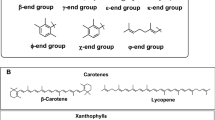Abstract.
Light-harvesting complexes (LHCs) located in the thylakoid membrane of plant chloroplasts are the collectors of solar radiation that fuel photosynthesis, and thus enable life on our planet. They consist of pigments that are non-covalently bound to light-harvesting proteins (Lhc proteins), which form a family whose members share a significant sequence identity. Due to their central role in photosynthesis, LHCs belong in several respects to the best-analysed membrane proteins. In the past decade, tremendous progress has been made in identifying new members of the Lhc family, in localising the LHCs within the photosystems, and in elucidating the structure and function of LHCs, which is summarised in this review. By contrast, gaining insight into the assembly process and the degradation of the LHCs could not keep pace. Therefore, topics for the next decade will be the elucidation of the location(s) and the operating mode of steps in the assembly and degradation process.
Similar content being viewed by others
Author information
Authors and Affiliations
Corresponding author
Additional information
Received 15 June 2008; received after revision 1 July 2008; accepted 10 July 2008
Rights and permissions
About this article
Cite this article
Schmid, V.H.R. Light-harvesting complexes of vascular plants. Cell. Mol. Life Sci. 65, 3619–3639 (2008). https://doi.org/10.1007/s00018-008-8333-6
Published:
Issue Date:
DOI: https://doi.org/10.1007/s00018-008-8333-6




